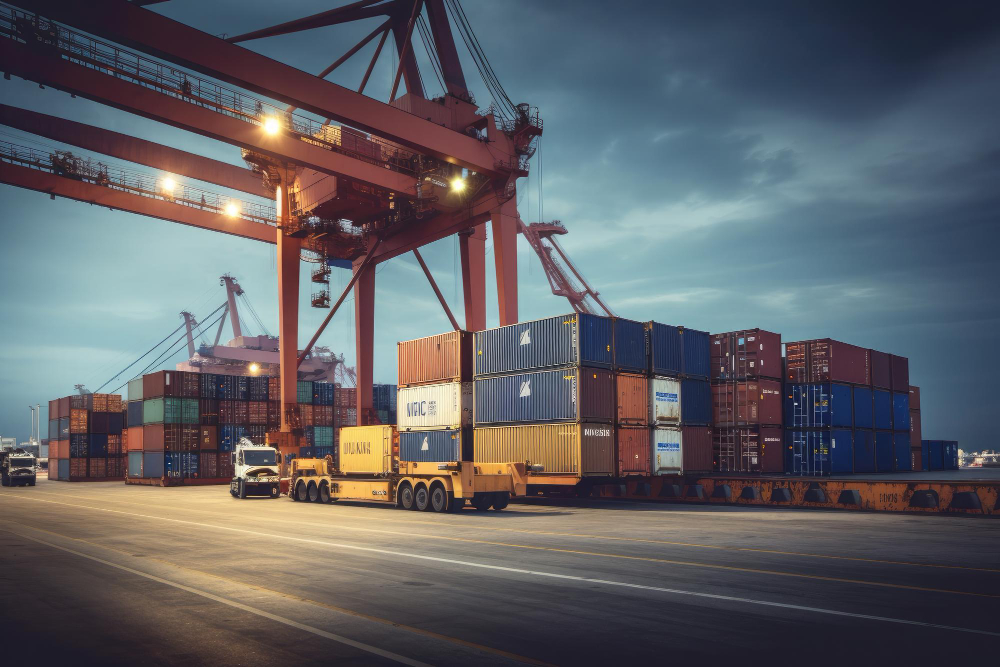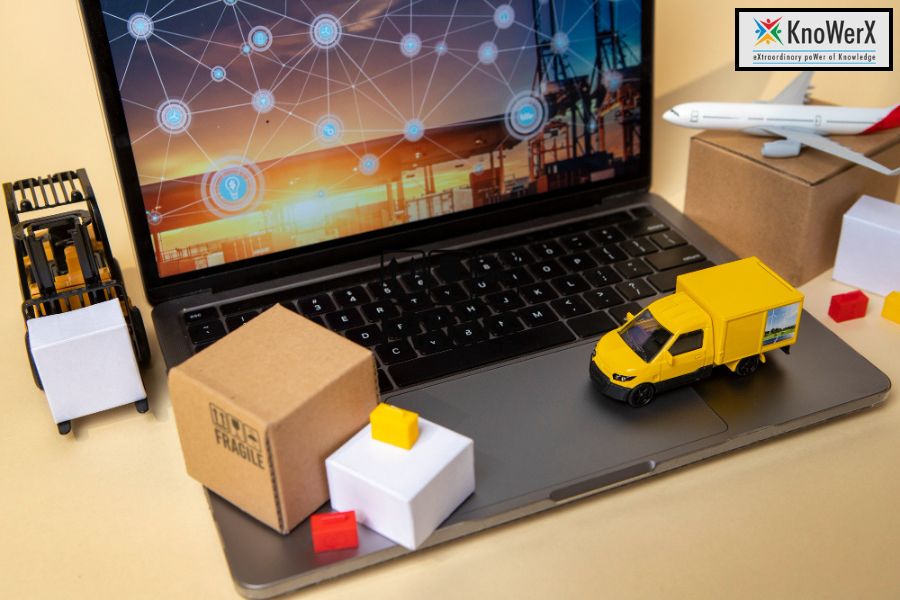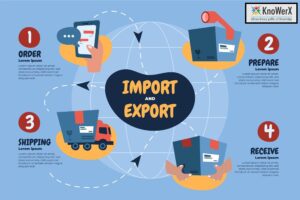How to Dominate Logistics and Distribution in 2025
The landscape of Logistics and Distribution is rapidly evolving. With technological advancements, changing consumer expectations, and global uncertainties, businesses in 2025 need to be more agile, efficient, and intelligent than ever before.

To succeed, professionals must focus on a strategic mix of innovation, workforce development, and customer-centric operations. In this article, we explore the key pillars to help you dominate Logistics and Distribution in 2025.
Embrace Tech-Driven Transformation
Leverage Artificial Intelligence and Machine Learning
Artificial Intelligence and Machine Learning have become essential tools in the realm of Logistics and Distribution. These technologies enable businesses to make smarter decisions by analysing large volumes of data. Predictive analytics, powered by machine learning, can forecast demand more accurately, reduce errors, and improve inventory planning. In transportation, AI algorithms can optimise delivery routes, saving time and reducing fuel costs.
Implement Internet of Things for Real-Time Visibility
The Internet of Things connects physical devices, allowing for seamless communication and data exchange across the supply chain. In Logistics and Distribution, IoT enables real-time tracking of shipments, improving transparency and customer satisfaction. It also facilitates condition monitoring for temperature-sensitive goods, ensuring compliance with safety and quality standards. Companies that invest in IoT infrastructure are better positioned to react swiftly to disruptions and delays.
Adopt Blockchain for Security and Transparency
Blockchain technology introduces a secure, tamper-proof method of recording transactions and tracking assets. In Logistics and Distribution, blockchain ensures authenticity and accountability across the entire supply chain. It allows all parties to view a single version of the truth, which is crucial for traceability and fraud prevention. By adopting blockchain, companies can foster trust and collaboration with partners and clients.
Optimise Warehouse and Fulfilment Operations
Invest in Robotics and Automation
Automation is transforming warehouse operations across the globe. The use of robotics for picking, packing, and sorting reduces manual labour and human error. Automated systems can operate round-the-clock, increasing throughput and reducing operational costs. In Logistics and Distribution, automation enhances efficiency, improves accuracy, and accelerates order fulfilment.
Develop Flexible Warehouse Networks
The traditional model of large central warehouses is being replaced by decentralised networks. Micro-fulfilment centres located closer to urban populations enable faster delivery and reduced transportation costs. These flexible networks are especially beneficial for e-commerce businesses. They allow companies to respond quickly to demand fluctuations and minimise last-mile delivery challenges.
Use Data-Driven Inventory Management
Data analytics is a critical component of modern inventory management. Companies that utilise real-time data can make informed decisions about stock levels, replenishment timing, and product placement. Just-In-Time restocking minimises excess inventory, lowers storage costs, and prevents stockouts. Cloud-based inventory systems provide visibility and control across multiple locations, improving overall operational efficiency in Logistics and Distribution.
Build a Resilient and Agile Distribution Network
Diversify Carrier and Supplier Relationships
Relying on a single supplier or logistics provider can be risky. Diversifying your network of carriers and suppliers ensures continuity in case of disruption. Building relationships with regional and local partners allows for quicker response times and better adaptability. This diversity enhances the robustness of your Logistics and Distribution system.
Prepare Effective Contingency Plans
Unforeseen events such as natural disasters, pandemics, or political unrest can disrupt supply chains. Having contingency plans in place enables businesses to react quickly and maintain operations. These plans may include rerouting options, emergency inventory reserves, or alternative suppliers. In Logistics and Distribution, preparedness is a competitive advantage.
Implement Dynamic Route Planning
Advanced route planning tools use data such as weather, traffic conditions, and vehicle availability to determine the most efficient delivery paths. Integrating these tools with GPS and Transport Management Systems ensures timely deliveries and optimal fuel usage. Businesses that use dynamic route planning can reduce delivery times and increase customer satisfaction.
Prioritise Customer-Centric Logistics and Distribution

Offer Same-Day and Next-Day Delivery Options
Today’s consumers demand speed and convenience. Providing same-day or next-day delivery options can set your business apart from competitors. To meet these expectations, companies must invest in local fulfilment centres and efficient delivery networks. Fast delivery enhances customer loyalty and boosts brand reputation in the Logistics and Distribution sector.
Provide Transparent Tracking and Communication
Customers want to know the status of their orders in real time. Offering tracking features and proactive communication builds trust and reduces customer inquiries. User-friendly dashboards and automated notifications keep customers informed throughout the delivery process. Transparency in Logistics and Distribution strengthens the customer experience.
Integrate Sustainable and Ethical Practices
Sustainability is no longer optional. Businesses that prioritise environmental responsibility gain favour with customers and stakeholders. Initiatives such as eco-friendly packaging, carbon offset programs, and electric delivery vehicles contribute to a greener Logistics and Distribution model. Ethical sourcing and labour practices also play a crucial role in building a responsible supply chain.
Train and Empower Your Workforce
Upskill Teams in Digital Tools and Analytics
As technology continues to evolve, the need for a digitally skilled workforce becomes more urgent. Providing training in logistics software, data analytics, and emerging technologies equips employees to manage complex operations. Companies that invest in upskilling gain a competitive edge in Logistics and Distribution.
Build Cross-Functional Teams
Collaboration across departments is key to a cohesive Logistics and Distribution strategy. Cross-functional teams that include logistics, IT, customer service, and procurement professionals can solve problems faster and innovate more effectively. Encouraging collaboration leads to more efficient processes and better outcomes.
Promote Leadership in Crisis Management
Leaders play a critical role in navigating disruptions. Developing leadership skills in risk assessment, communication, and decision-making prepares teams to handle challenges confidently. Training programs focused on crisis management build resilience within Logistics and Distribution operations.
Frequently Asked Questions
What technologies will dominate logistics in 2025?
AI, Machine Learning, IoT, and Blockchain are key technologies that will drive efficiency, transparency, and intelligence in logistics operations by 2025.
How does IoT improve logistics and distribution?
IoT enables real-time shipment tracking, condition monitoring, and enhanced visibility across the supply chain, improving responsiveness and customer satisfaction.
Why is automation essential in warehouses?
Automation improves speed, accuracy, and cost-efficiency by reducing manual labour and streamlining fulfilment operations.
Ending Notes

The future of Logistics and Distribution in 2025 is defined by technology, agility, and customer focus. Businesses must embrace innovation, strengthen their networks, and empower their workforce to stay ahead. At KnoWerX, we specialise in preparing professionals for success through high-quality training and certification programs. With our guidance, you can master the strategies needed to dominate Logistics and Distribution and drive your career or business forward in the evolving global market.
Image Reference: Freepik
Disclaimer: All trademarks, logos, and brand names are the property of their respective owners. All company, product, and service names used in this website are for identification purposes only. Use of these names, trademarks, and brands does not imply endorsement.



